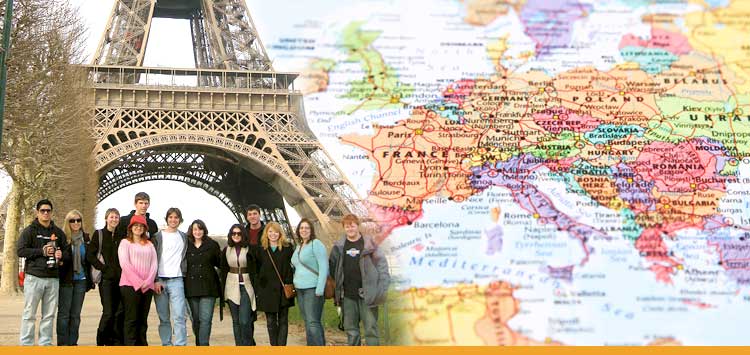2008 European Odyssey
Welcome to the 2008 European Odyssey Web site, where we will follow the experiences of 14 students and their two professors as they travel through Europe in one of the most unique study abroad opportunities ever offered.
For 11 weeks - from February 23 to May 8, 2008 - this semester-long program will allow the students to study European history, politics and culture in the context of the developing European Union. This interdisciplinary program also challenges the students as individuals who must work within a group setting to learn, live and thrive.
About the 2008 European Odyssey
On February 23, 2008 14 students and 2 professors embarked on an 11-week, semester-long program that allows the students to study European history, politics and culture in the context of the developing European Union. This interdisciplinary program also challenges the students as individuals who must work within a group setting to learn, live and thrive.
Though other schools offer study abroad opportunities, there are none of which we are aware that offer an 11 week mobile classroom covering as many countries and cities as this "Odyssey." Travel is by minivan. Accommodations are in youth hostels and inexpensive hotels.
According to Hofstra Political Science Professor Linda Longmire, the structure of the European Odyssey course is based on the same ideals as the European Union: unity and diversity. Many of the countries on the tour, now partners in the EU, at some point in their histories may have been enemies or isolated from one another. Professor Longmire says, "As the students contemplate the unity and diversity of the countries on our itinerary, they will work on their own partnership. They need to work and travel as a team while holding onto and appreciating the interests and qualities that distinguish them as individuals."
Sponsored by Hofstra University's New College, the Odyssey programs have been ongoing since 1990, though this was the second one to take place for an entire semester. Hofstra graduates from past European and American Odyssey programs have called it a life-changing, transformative experience.
Coursework examines both historical and contemporary topics in each country and region. It is a 16-credit course comprised of 12 credits of coursework and a four credit independent project. The first aspect of the coursework focuses on the ancient and medieval roots of European civilization. Students visit Olympia, the home of the Olympic games; the Acropolis and the Parthenon in Athens; as well as the Coliseum and Pantheon in Rome. The second part of the course is devoted to understanding the contemporary, political, economic and sociological landscape of Europe. This is complemented by excursions to the European Parliament in Strasbourg, Brussels and the EU Court of Justice in Luxembourg. The third and final aspect of the program was an examination of human values and human rights in the context of the history and culture of WWII and the post war era in Europe. This part of the trip includes a stop at Terezin, the Czech concentration camp.
Faculty
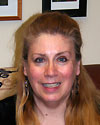
Linda Longmire
Professor and Teaching Fellow of Political Science
Linda Longmire, Ph.D. is Professor of Political Science at Hofstra University, where she teaches Women's Studies, International Politics, and Political Theory. She is the Director of New College's European Odyssey Program and the Co-Director of the Italian Odyssey Program. She is also the Producer and Host of a weekly radio show, "Visions and Choices" on WRHU, 88.7 FM, Radio Hofstra University.
Office: 103A Roosevelt Hall
E-mail | Web Page | Bio
Voice: (516) 463-5828
Fax: (516) 46(516)463-4832
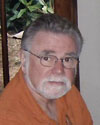
Timothy Smith
Professor Emeritus of Foundations, Leadership & Policy Studies
Timothy H. Smith, Ed.D. is Professor Emeritus of the Foundations, Leadership and Policy Studies Department at the School of Education and Allied Human Services at Hofstra University, where he has taught Philosophy of Education, Cross-Cultural Education and Ethics for Educators. He also teaches Human Values and Human Rights in Modern Europe in New College's European Odyssey Program and Educational Psychology in the SOEAHS’s Summer in Sorrento program.
Office: 277 Hagedorn Hall
E-mail | Bio
Voice: (516) 463-5773
Students

Shane Altwies
Shane Altwies, 19, is a sophomore from Southington, CT. He is majoring in Radio, Television and Film and also has a history minor. Shane is a member of Hofstra's Help Save Darfur chapter and also serves as a peer teacher. Shane is most looking forward to visiting Germany and Luxembourg and says, "I've always wanted to travel overseas, and this program seemed to be the perfect opportunity to do so." He hopes the Odyssey will allow him to "experience new places and gather a better understanding of how people overseas view America."
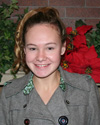
Keegan Bales
Keegan Bales, 19, is a sophomore from Lattingtown, NY, majoring in communications and economics. What most interested her about the Odyssey program was "the chance to travel and study Europe with other college students. It seemed like a once-in-a-lifetime opportunity." She hopes the program will help her to become more independent and to gain a better "appreciation and understanding of European culture and history."
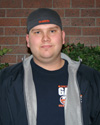
Michael Bulkley
Michael Bulkley, 21, of Hicksville, NY, is a senior management major. He hopes to someday work in sports or the entertainment industry. He is most looking forward to visiting Germany and Greece. He became interested in the Odyssey program "because of the number of countries that will be covered in a very short amount of time."

Krista Faltin
Krista Faltin, 19, from Bay Shore, NY, is a sophomore majoring in history. She plans to become a lawyer. The countries she is most looking forward to experiencing are "Greece, Turkey, the Czech Republic, Austria and Germany." This is her first trip to Europe, and she says she hopes "to learn as much about European history and culture as possible," while on the Odyssey.
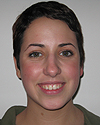
Samantha Giordano
Samantha Giordano, 19, is a sophomore from Oceanside, NY. She says, "I especially enjoy poetry and learning about culture through language." What interested her about the Odyssey is "its complete lack of routine and the idea of learning through experience." Though she's already been to Italy twice, Samantha hopes the program will give her "a better understanding of people in general and of myself. I hope to realize the interconnectedness of the world and its diverse cultures and where exactly I belong."
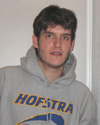
Richard Hackford
Richard Hackford, 21, is a senior from Queens who is most looking forward to visiting Prague while on the European Odyssey. He hopes to gain new friendships and see many memorable landmarks while participating in the program.
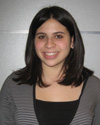
Kate Herron
Kate Herron, 19, is a sophomore from New Jersey who is excited about traveling to Turkey. She is an active member of Hofstra Hillel and Phi Sigma Sigma and hopes the Odyssey will allow her to expand her "knowledge of the world."
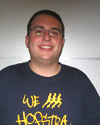
Jeremy H. Katz
Jeremy H. Katz, 19, a sophomore, is a business management major from Old Westbury, NY. He is most looking forward to visiting Belgium, Turkey and Hungary. This is his first trip abroad.
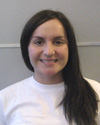
Megann Licata
Megann Licata, 22, is a senior from Long Island, who is very interested in dance choreography and film. Of all the cities on the Odyssey itinerary, she is most excited about traveling to Turkey.
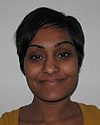
Teena Mangroo
Teena Mangroo, 22, is a junior from the Bronx, NY, majoring in finance. She is an active member of Hofstra's Financial Management Association and also enjoys playing guitar, photography and bellydancing. Teena is most looking forward to visiting the Czech Republic, Greece and Belgium and is excited about this opportunity to study European culture and diversity. She's hoping the Odyssey will allow her to gain "a better understanding of other cultures, a better understanding of the people I am traveling with, and maybe event a better understanding of myself and what my goals are in life."
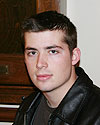
Anthony Triolo
Anthony Triolo, 21, is a senior who is majoring in sociology at Hofstra. Among his career goals are working with the FDNY and possibly starting his own business. His hobbies include surfing and snowboarding. This is Anthony's second European Odyssey, and this year he is serving as a peer teacher. "The experience of traveling and studying other cultures," he says, are what initially drew him to sign up for the 2007 European Odyssey.

Deana Valarezo
Deana Valarezo, 20, is a junior from Long Island who is most looking forward to visiting Greece and Italy on the European Odyssey. She hopes to gain a better understanding of other cultures through the program.
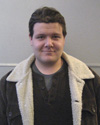
Ryan Waslenko
Ryan Waslenko, 20, is a junior from Natrona Heights, PA, majoring in political science. He is interested in someday becoming a patent attorney. Ryan enjoys playing guitar and writing. He is most looking forward to visiting Croatia and Greece. This is his first trip abroad.
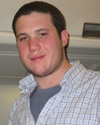
Steve Wildes
Steve Wildes, 20, is a junior from Massachusetts who is fluent in French and looking forward to traveling to France. He considers himself a dedicated student who "has high aspirations for law school." He hopes that through the Odyssey he will enjoy "the pleasures of travel and the best of all cultures"
Itinerary
February 23 - Depart for Paris
February 27, 28 - St. Malo, France
February 29 - Rocamadour, France
March 1, 2 - Carcasonne, France
March 3 to 5 - Nice, France
March 6 to 8 - Florence, Italy
March 9 to 11 - Rome, Italy
March 12 to 14 - Sorrento, Italy
March 15, 16 - Taormina, Sicily
March 17, 18 - Agrigento, Sicily
March 19 - Palermo, Sicily
March 20 - Vieste, Italy
March 21 - Ferry from Ancona, Italy, to Igoumenitsa, Greece
March 22 - Nafpaktos, Greece
March 23, 24 - Olympia, Greece
March 25 - Monemvasio, Greece
March 26, 27 - Athens, Greece
March 28 - Xanthi, Greece
March 29 to 31 - Istanbul, Turkey
April 1, 2 - Izmir, Turkey
April 5 - Xanthi, Greece
April 6 to 8 - Meteora, Greece
April 9 - Ionnina, Greece
April 10 - Ferry to Italy
April 11, 12 - Treviso, Italy (Venice)
April 13 - Ljubliana, Slovenia
April 14, 15 - Zagreb, Croatia
April 16 to 18 - Budapest, Hungary
April 19, 20 - Vienna, Austria
April 21, 22 - Cesky Krumlov, Czech Republic
April 23 to 25 - Prague, Czech Republic
April 26 to 29 - Berlin, Germany
April 30, May 1 - Heidelberg, Germany
May 2, 3 - Luxembourg
May 4 - Brussels, Belgium
May 5 - Bruges, Belgium
May 6, 7 - Paris, France
May 8 - Return to New York
Odyssey Journal
The students studying abroad with the European Odyssey program shared their thoughts in words, pictures and video as they learned more about foreign countries and cultures.
April 24th, 2008

(From Prague, Czech Republic): I’m awestruck. The class spent time studying on the grass overlooking the Charles Bridge as a hot air balloon floated by. The majesty of Prague's construction is like Paris meets the narrow passageways of Venice. We finished working and had dinner by the Old Town Square, next to the clock tower. Later on, an orchestra played Mozart and Vivaldi in a nearby church, imagine the acoustics! Prague was an unbelievable experience and a must location on our Odyssey.
April 22th, 2008

You see the meeting of the East and West is evident everywhere in Istanbul. From the modern urban section to the blue mosque there is something truly unique about this city. I was able to visit the Hagia Sophia a former church and mosque, bargain with shop owners at the Grand Bizarre, and drink tea almost everywhere we went. The people here are very welcoming and are always looking to talk to anyone willing.
There are few ways to describe the impressiveness of Meteora. The mountains look like they belong on the moon, but the six monasteries set at the top are evidence of man’s ingenuity.
We only had one night to spend in Lublianja, and wish I had at least one more. The Slovenian capital had a rich medieval history as well as plenty to do along the beautiful river side area, where you could find a wide range of shops, cafés and restaurants.
April 22th, 2008

(From Cesky Krumlov, Czech Republic): The Southern Bohemian area of Czech was our first stop as we settled in Cesky Krumlov. The beauty of this town is in the fine architecture and the interesting faces.
April 20th, 2008

(From Vienna, Austria): Sun poured over Vienna when we got there. It was a joy to walk around after a few days of rain. Vienna has such a rich art background but definitely maintains a city vibe outside the world-famous art districts. I visited Museum Quartier which included the Modern Museum and the Leopold Museum. What a difference from the Louvre! We lay out on the grass and compared dozens of paintings. We spoke with a young EU supporter, who works at privatizing community services and monitors border evolution in Europe.
April 18th, 2008

From Budapest, Hungary): Arriving back into Budapest was great. I was fascinated by the Parliament and St. Stephen's cathedral last year, as well as the cultured old town. So clean and well built, Budapest had wonderful food, a taste of convenience, and so many things to do. After class, we saw the Jewish Memorial, and visited the biggest mall in Budapest, the WestEnd. I will always consider Budapest to be the Paris of Central Europe.
April 16th, 2008

(From Ljubljana, Slovenia): Hostel Celica had a band playing when we got to our overnight stay in Slovenia. The crowd was full of travelers and young artists. The accommodations were unlike any modest living, "the hippest hostel in Europe." Visiting the town, we saw it was rich in history, including the impressive Dragon Bridge.

We arrived in Ancona, Italy, yesterday after a long, 14 hour ferry ride from Greece. We then drove to Ljubljana, Slovenia where we spent the night. This morning we visited the castle there and saw the famous Dragon Bridge before heading to Budapest, Hungary. We stopped briefly in Croatia en route. We are now settled in here in Budapest where we will be for the next three nights.
April 14th, 2008

(From Meteora, Greece) Summits and floating monasteries make this town a beautiful stop on our Odyssey. I've hiked up the mountains twice, giving myself a great workout and a chance to personally reflect. Our class took a trip to see the Hotel owner's father, a farmer who had made it through WWII and the Greco Civil War. His story was so rich in personal struggle and history. The weather was sunny, and our classes added such an insight to the wonder of our environment. I would highly recommend visiting this world, "suspended in air."
April 13th, 2008

Greetings from Meteora, Greece
After three full days in this unique place full of geological and cultural richness, we are heading back to Italy on the ferry tomorrow night. We will spend the day tomorrow in Ionnina where we will visit the Dodona, one of the oldest oracles in Greece and second in importance only to Delphi. We got a lot of work done here including two midterms, a long interview and an extensive class, but we also visited the impressive Orthodox Christian monasteries which are perched on top of the strange rock formations in this area. Everyone seemed really at home in this friendly town, and that always makes it a little hard to leave. But as always there's more adventure ahead. We'll drive directly to Slovenia after we land in Ancona on April 15.
April 7th, 2008
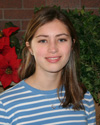
Today we ate Turkish cuisine in a garden restaurant, shopped the local market, and interviewed the hospitable locals of Selcuk. Not too far away is Ephesus, one of the most profound ancient ruins of Turkey. The site is so well preserved it is almost as though we took a trip back in time. We also visited the site that scholars debate to be the home and grave of Mary, mother of Jesus. It was a moving place and I was so happy to be a part of this history. Istanbul was beautiful but urban. It is a difference to be introduced to the smaller communities and see how personal the relationships are.
April 6th, 2008

Greetings from Ephesus.
We left Istanbul yesterday and arrived at Bergama, which is ancient Pergamon, just as the sun set. It was a long drive during which we also took a short ferry across the Dardanelles. We got to ancient Troy just 15 minutes before closing, so we hope to make a lunch stop there on our way back to Greece when we retrace our steps. Though there isn't much to see at Troy compared to other archaeological sites, it's still fun to see it nontheless. But there is a great deal to see in the ruins of Pergamon, which we visited this morning. The Acropolis is at the top of a great hill and below is the renowned Temple of Aslepius, the god of healing. Pergamon also once contained a great library of over 200,000 volumes which Mark Anthony gave to Cleopatra as a wedding present. Though we didn't see any books there, I am hopeful the students will unearth theirs in preparation for the midterms.
This afternoon we drove on to Ephesus, one of the most interesting and layered of ancient locations. We are staying at an small hotel across the street from the location of the Temple of Artemis, which was one of the 7 wonders of the ancient world. This place was also purportedly the home of the mythic Amazons. On the other side of our hotel are the ruins of one of the earliest and largest Christian churches in Asia Minor established by the apostle John. Next to this is a mosque above which sits an Ottoman castle. From our rooftop terrace we feel as if we are in the center of world history.
April 3rd, 2008

Istanbul was one of the gems of Europe. The amount of diversity in Istanbul made it one of the best places I've visited. The Ayasophia was a marvel of so many different religions. It is so interesting to see the difference between the Asian side and the Western European side. The Grand Bazaar was truly a shopping mecca. The condition in Turkish politics was so interesting to hear from Tara, a professor at Sabanci University.
March 29th, 2008

A metropolitan worth seeing, Athens is a perfect example of Europe's clash between the new city and the old "high point" of ancient Athens. We found some of the best gyros in the world, shopped boutiques, climbed to the Acropolis, and visited the University. I was able to meet up with some distant relatives from Greece and have dinner.
March 27th, 2008

Olympia is a breathtaking ruin. It is the site of the first Olympic games. It is a pleasant walk from our Hotel to the ruins. At the site, there remains a struggle between the Pagean and Roman ideals. In fact, most of ancient Olympia was destroyed by the Roman Empire. The modern town is very pleasant and the food is excellent. It is refreshing to dine in small villages where all of the food is made in the town itself.

Venice was unlike anything I've ever seen before. It was amazing to see boats parked outside the Venetian homes. We visited St. Mark's Square and the Jewish Ghetto. The streets were so quaint and narrow. Every turn seemed like an adventure. The conditions in the Ghetto were ruinous, and gave the already decaying buildings a new character. However, the oldness adds to the charm. It was a place I definitely would want to live.

The area of Rome that I wanted to visit the most was the Coliseum. It was the most amazing thing I have ever seen. All the trap doors, hidden rooms, and elevators below the stage made it easy to picture what it would have looked like when it was first built. Our tour guide was so informative and artistic about his description of this massive ruin.

As the group settled down in Nice, I decided to take it upon myself to take a 35 minute train ride to Monaco, which is its own country, controlled by a king. Upon arrival I could feel the wealth in the air. The two-mile wide country felt more secure than JFK International Airport. Cameras were facing all directions on every street. I strolled down to the dock, to check out the massive yachts as well as top of the line speed boats. I entered what is known as the "grand casino" it was a magnifcent site, and you could feel that many emperors and kings have lost and won millions of dollars there. Unfortunately, I was talking too loud and was asked to quiet down, I took that as my Q to leave, After a quick run-in with the Monaco Police and a passport check I was back on my way back to nice safe and sound. 1 extra country for me!

We have arrived in Greece. We are now settled in Nafpaktos and we cannot wait to see this beautiful country.
March 23rd, 2008

The tour through the Coliseum in Rome was spectacular. We learned how women had to stand in the higher levels, while men sat close to the main floor. It was a great to reflect on the status of early Roman citizens, compared to the current day condition. Our tour guide stressed the importance of our imagination; to see this structure not only for what it is today, but how it must have looked at the peak of its design.

Sorrento not only offers a beautiful waterside climate, but the quaintness of a small village. Taking the ferry to Capri was breathtaking. From the color of the water to the crispness of the air, to the cliffside and the rolling clouds, Sorrento and Capri offered a welcoming lifestyle. The people were so hospitable, kind, and intelligent. Their position on the conditions in Naples, and the provincial divides revealed a changing Italy under EU membership.
March 21st, 2008

We arrived in Rome on the afternoon of St. Patrick's Day, and 24 hours later we had seen much of a city where the present meets the past. In our first full day in the city we visited the Pantheon, the most architecturally impressive of all the Roman buildings we saw. We then visited the Trevi Fountains where we tossed a coin into the water in order to guarantee our return to Rome. We finished our day long trek by visiting the Spanish Steps, Trajan's Market, and Piazza del Campidoglio. Rome has truly lived up to my great expectations for being a haven of amazing historical structures and artifacts.
March 18th, 2008

Ciao from Rome!
Yes, all roads do eventually lead to Rome, and so did ours today. After leaving the Costiera Amalfitana and village beauty of small scale Sorrento and saying goodbye to the omnipresent Mt. Vesuvius which is the region's pivot point, we entered the complex urban panorama that is Rome. As we followed the ancient Appian Way into the city we were struck with how deeply woven together are the many layers of Roman history and life. There are priceless ruins that are centuries old seamlessly placed right next to hypermodern buildings and projects. It makes the old world come alive and gives the contemporary one a depth and substance it would not otherwise have.
We have an exciting schedule for the next two days including visits to the Pantheon considered the world's most perfect building, the Piaza di Popolo with its many spinxes, the Spanish Steps and the Trevi Fountain. Day Two will take the group to Vatican City and the dramatic St. Peter's Square and Basilica and the extensive collections of the Vatican Museum including the Sistine Chapel. That afternoon we will experience the grandeur and horror of the Coliseum and then later have dinner in the charming neighborhood of Travestere. We joke about how much beauty we can bear, and obviously Rome continues to expand our horizons and our appreciation for both nature and human culture.
March 6th, 2008

Nice is amazing; the French Riviera really lived up to its reputation. We drove up into the Beverly Hills-like neighborhoods and walked along the beaches collecting rocks. St. Paul was another beautiful castle perched at the highest point in Nice. Inside were art shops and galleries.
March 5th, 2008

Our lovely hostel is located on the Riviera in the hills above Nice and between Cannes and Monte Carlo. After class on the terrace of the hostel, during which we discussed the origins of the European Union, we set out on a short tour of the region by van. First we drove into the city of Nice, and students explored the beautiful palm tree lined Promenade des Anglais as it follows the Mediterranean coastline. Back in the van we drove to the enchanting port of Antibes, which was founded in the 5th century B.C. as a Greek colony, whose harbor is still protected by a looming fort. We then climbed up to the medieval village of St. Paul de Vence, where contemporary artists' ateliers and studios line the ancient streets. The ramparts surrounding the village provide a 3600 panorama of the countryside, including a view of the Mediterranean in the distance. We leave France tomorrow, and after a quick stop in the mountain top village of Eze, we enter Italy and the next stage of our adventure.
March 3rd, 2008

This afternoon we arrived at Nice on the Cote D'Azure after a lovely, easy, breezy drive from Carcasonne. As we approached the Maritime Alps the countryside looked like a Cezanne painting dotted with cypress trees and golden villages. Our hostel in Nice is high above the city in the beautiful Villa St. Exupery, which was at one time a convent and now is a welcoming refuge for young travelers. Each day we are becoming a more coordinated and compassionate community on the road, and we are reminded by the beauty we encounter of how lucky we are to be sharing this learning adventure.
March 2nd, 2008

Yesterday we arrived at the World Heritage site of Carcasonne, France, which is a renowned medieval city surrounded by two complete walls, 52 towers and 3 kilometers of ramparts. The day was a bit stormy, and a dramatic wind added to the historic mystery of this ancient fortress of the Cathars. They were a Christian sect that flourished between the 11th and 13th centuries in this section of France and which emphasized a strict code of assceticism, community service and direct spiritual experience. They were condemed by the Catholic Pope as heretical in the 13th century, and many years of ferocious struggle against them ensued through the Inquisition. But the power and beauty of their creations still enchant and endure.
Tomorrow we head for Nice and our first glimpse of the Mediterranean!
Febuary 29th, 2008

Bon Soir from Rocamadour, France! At sunset we reached this dramatic fortressed medieval city clinging to the cliffs chiseled out by the Dordogne River. This combination of natural and manmade wonder make it one of the most enchanting spots in France. After a class and a tour of the town tomorrow we will continue south to the walled city of Carcasonne where we will stay for two days.
Febuary 28th, 2008

We just visited the St. James American Cemetery in Brittany, France, where more than 4,410 American soldiers are buried. They lost their lives during several key WWII battles in Normandy and Brittany. This cemetery of over 28 acres was constructed on the site of a temporary cemetery established shortly after the area was liberated on August 2, 1944, by the U.S. 8th Infantry Division. At one end of the memorial chapel is a limestone sculpture group titled “Youth Triumphing Over Evil.” Each student was required to locate one grave and to note the name, place of origin and dates of birth and death of that soldier in order to make our commemoration more specific and more vivid.
Febuary 27th, 2008

We left Paris after visiting the Pere La Chaise Cemetery where so many influencial thinkers of French art, culture and history are buried as well as distinguished foreigners including Oscar Wilde and the notorious Jim Morrison. It was our first long van ride, but I think this is going to be a group of good travelers!

On our way to our destination for the night, the ancient port of St. Malo, France, we stopped at the breathtaking cathedral of Chartres to see the distinctive blue stained glass windows and the famous labyrinth, which sketched the path of meditation for so many pilgrims over the centuries. Hofstra's labyrinth is an exact copy of the one at Chartres, and hopefully our students walk its stone pathway with comparable reflection.
Febuary 25th, 2008 - Bonjour from beautiful Paris!

We arrived safe and sound yesterday though obviously a bit jet lagged and overwhelmed by the complexity of Paris! After a brief tour of some of the major sites such as Notre Dame and the Arc de Triomphe, we stopped for a few idyllic hours at the Eiffel Tower. We will also end our program there 10 weeks from now, so it will be exciting to see how much people will have seen and learned in the interim.
Today students are exploring the wonders of The Louvre Museum. Though they will only have a chance to experience a few of the more than 30,000 works of art, they are required to find and describe at least two of their favorites in detail. Learning to see and learning to articulate clearly that which one sees is a rich part of this experiential pedagogy. And we will see so much!
Tomorrow we will visit another great museum, The D'Orsay, which houses so many modern masterpieces. We will also watch the sunset at Montmartre, the highest point in Paris and a gathering spot for tourists and Parisians. The following day we will visit the Pere LaChaise cemetery where luminaries of French culture and history are buried. It's also the resting place for foreigners like Jim Morrison and Gertrude Stein, so it should be an adventure.
We're sorry not to have been in touch earlier, but it was hard to find Internet access amidst all of our other tasks. This may happen on occasion in the future, but we'll do our best to stay in touch.
Best wishes from all of us.
Notes from the Old Country
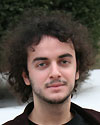
This journey across Europe has exposed me to perspectives long dead in the U.S., or dead to Washington and mainstream America anyway. The pied range of angels of ideology we have encountered encompasses everything from reactionary xenophobia and statism to broadminded anarcho-socialism.
In Athens, we spent the night in a university occupied by its students, all representing assorted forms of collectivism. The walls were tattooed with anarchy signs, sickle and hammers, and various politically charged aphorisms, the classrooms were bedrooms, and the mascots were a pack of large dogs protecting the activists.
This was just one occupied university of over 300 in Greece. “University asylum” renders universities here free-speech zones and police are barred entry. So in comfort and security, my new friends and I were given the opportunity to obtain hours of interview time with these young architects of history.
I came to find that these hopeful communists are not crazy or extremist, for what they demand is not all that radical: to keep capitalism out of education, to ensure education for not only those who have the financial means to procure it, but for every human being entirely irrelevant of what economic milieu s/he comes from. Despite all the bickering about tuition back home, never have I had a serious conversation with someone advocating an assured university education for all. That sort of idea is completely absent in contemporary political discourse in the U.S., not in the classroom, not on television, and certainly not in Washington.
At times, it seems too late to change course in America; the capitalist octopus has wrapped its tentacles so tight around our country, there seems little hope for an alternative socioeconomic arrangement. My optimism is reserved for the rest of the global community.
With that, I offer these following thoughts to my European brothers and sisters:
Dear Europe:
I have had the bulk of my upbringing in the U.S., the greater part of my education in an American public school system, and a lion's share of debate amongst friends and classmates transpire within the context of a political spectrum that extended little wider than Democrat vs. Republican. Notions of government-subsidized education (through grad school and beyond), universal healthcare, guaranteed holiday – indeed the prerequisites to socialism – have long been pushed to margins of my mental framework.
Many times I have heard remarks such as: "socialism, though a good idea in theory, is inherently impractical; "human nature is fundamentally incompatible with it;" "socialism breeds indolence;" "socialism is in essence an evil philosophy."
This sort of diatribe is as the late Daniel Singer reminds us is “the story as written by the victors” and it is commonplace on our side of the Atlantic, averred devoid of explanation, accepted without protest. The truth of the matter is that almost all such assessments have their root – not in the careful analysis of human nature, economics, or even leftist philosophy – but in the downfall of the Soviet Union. The USSR has since its passing been reckoned as the last real stronghold of socialism and potential for communism. When it died, it is alleged, the impetus behind it was exposed for what it really was: a Utopian pipedream. But what was the real reason for the collapse?
If the socialist system is truly unviable and cannot stand on its own, why did the U.S. run such a vigorous campaign against it? Surely it would have been more sensible to allow the natural and inevitable degradation of a socialist society to transpire on its own than to spend trillions of dollars on weapons buildup and propagate a military industrial complex that our country suffers from to this very day. What would have come of this grand socialist experiment had it occurred exclusive of U.S. interference?
Of course, any endeavor to answer such a query cannot extend beyond the hypothetical. But that being acknowledged, I do not think it outside the realm of possibility that in the wake of post-Stalinism, a healthier socioeconomic arrangement and a more egalitarian altruistic paradigm and exemplar for the global community could have been.
Alas, history did not play out as such, and since the end of the cold war, power and influence has rested almost exclusively in the hands of American capitalists, and now increasingly European ones. This ominous "liberal" trend, the dismantling of the welfare state, and the concentration of capital and the power it bestows into fewer and fewer hands has not ceased. In the absence of the Soviet Union, it is the leftist sector of the EU that now shoulders the responsibility counter it.
Student Movement in Greece

On June 2006 the New Democracy government led by the current President of Greece, Koras Koramnlis, proposed a education reform bill that threatens not only the future of education in Greece but is also a threat to the social welfare state in Greece. Under the provisions of the European social welfare state, education is free to all who attend. The students of Greece are not allowing this threat to continue uncontested. There has been a nation-wide protest among the Greek university students resulting in students occupying universities, participating in non-violent demonstrations and marches across Greece. Their protest is not just an opposition to local governmental changes, but is a part of a larger movement against neo-liberal reform that is corrupting the social welfare state, in which Europe has long standing foundations.
In Europe education is not just an investment in individuals’ future, but more so an investment in the future of society. This education reform is not just a change in the educational system for students, but a means of squashing Greek students position in the educational system and reducing their role as contributing members of society. With this reform, public universities will become privatized and students will be required to pay tuition, creating a disparity among students. For those who cannot afford to attend university, they will have to settle for a lesser education and most likely a lesser position in society. This student movement is based deeply in politics. The Greek university student political organizations have string ties with and are active members of Greek political organizations including KKE, Pasok, and New Democracy.
Greece’s political organizations are unique in that it is comprised of more than 40 leftist organizations, most of which express either communistic or socialistic views. These groups along with Pasok, a centrist political organization, have formed an alliance to combat the New Democracy party, which is the right- wing political organization currently in power in Greece. These leftist political student groups have managed to successfully organize a democratic movement in which each week, all of the political groups around Greece, tens of thousands of students united, vote on whether they want to continue the student strike. The Greek students have managed to shut down all of the universities in Greece, just to express that they are unwilling to compromise their rights as students.
While the students have remained democratic and diplomatic about their opposition to this potential reform, the government along with the media has not done the same. The government is using violence to not only combat the peaceful opposition, but has also conspired to turn the public opinion away from the students by making false accusations against the students, weakening the students credibility, and going as far as having police officers disguise themselves as students and performing violent acts in the streets. The students have remained peaceful, yet students have been wrongfully arrested by police officers. However, these corruptions made by the government only strengthen the students desire to continue their movement. What the future has for the students of Greece and all over Europe is dependent on which side prevails, neo- liberalists or the socialists, but the socialists across Europe are standing strong in their ongoing opposition to neo-liberalistic reforms.
On Greece and Paris
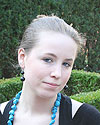
While we were in Olympia I had a chance to learn more about the "free" education in Greece. What we consider to be high school level does not properly prepare one for college under their free education system. If families in Greece can afford it, they send their child to public school in the mornings then pay for the child to attend private school in the afternoon. This results in twice the work load but a much better prepartion for college. I found that to be extremely interesting and very informative.
We were were in Paris, we visited Pere Lachaise Cemetary, and Linda split the group into smaller sections, giving each one four or five letters from the alphabet. Then each person within the group had to find someone with one of those letters as their last name. "R" was one of our group's letters. I found the memorial site of composer Gioacchino Rossini. Then while we were in Florence I visited his actual burial site in San Croce. Yesterday we were in his birth city of Pesaro. I found the three connections to be really interesting because it was by pure chance that I choose Rossini in the first place way back in Paris.
Leaving Greece
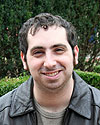
We just left Greece and I had an amazing time there. The countryside is incredibly beautiful and the people were so nice! First we went to Meteroa, a small town surrounded by giant rocks. Then we went to Athens, where we saw the sight of the first Olympic games! We made stops in Olympia and Monemvasia, before ending our stay in Nafpaktos on the Greek Independence Day. Greece is an incredible country and I hope that future Odysseans get the chance to go there as well.
Celebrating in Beautiful Nafpaktos

We are celebrating Greek Independence Day here in beautiful Nafpaktos, a small town at the edge of the Gulf of Corinth. There is a huge, new suspension bridge that spans the Gulf connecting the Peloponnesian Peninsula with northern Greece. Tomorrow on our way to the ferry back to Italy, we will stop at Dodona, the location of an ancient oracle described in earliest recorded history. Here are some fun facts about the place:
The shrine of Dodona was the oldest Hellenic oracle, according to the fifth-century historian Herodotus and in fact dates to pre-Hellenic times, perhaps as early as the second millennium BCE. Priests and priestesses in the sacred grove interpreted the rustling of the oak or beech leaves to determine the correct actions to be taken. When Homer wrote the Iliad (circa 750 BCE), no buildings were present, and the priests slept on the ground with ritually unwashed feet. Not until the fourth century BCE was a small stone temple to Zeus added to the site. By the time Euripides mentioned and Herodotus wrote about the oracle, priestesses had been restored. Dodona gained a reputation far beyond Greece. In Apollonius of Rhodes' retelling of the older story of Jason and the Argonauts, Jason's ship, the "Argo," had the gift of prophecy because it contained an oak timber taken from Dodona.
In the third century BCE, King Pyrrhus rebuilt the Temple of Zeus and added many other buildings and a festival featuring athletic games, musical contests, and drama enacted in a theater. At this time a wall was built around the oracle itself and its holy tree. In 219 BCE, the Aetolians invaded and burned the temple to the ground. Though King Philip V of Macedon rebuilt all the buildings bigger and better than before and added a stadium for annual games, the oracle at Dodona never fully recovered. In 167 BCE, Dodona was once again destroyed and later rebuilt 31 BCE by Emperor Augustus. By the time the traveller Pausanias visited Dodona in the second century AD, the sacred grove had been reduced to a single oak. Pilgrims still consulted the oracle until CE 391, when Christians cut down the holy tree. Though the surviving town was insignificant, the long-hallowed pagan site must have retained significance, for a Christian Bishop of Dodona attended the Council of Ephesus in CE 431. Archaeological excavations over more than a century have recovered artifacts, many of which are now at the National Archaeological Museum in Athens.
In Monemvasio
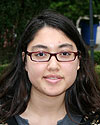
I was on the island town of Monemvasio, Greece with Steve, Katlyn, and Amanda this morning. We were aimlessly walking around and found the Aegean Sea on the edge of the island. The water was clear enough for me to see every rock and plant in the water. I peacefully sat on a rock just watching the water.
The Odyssey has been a whirlwind trip of big cities storming with tourists to small little towns where sitting watching the sea seems like the ideal choice. Sometimes I am so afraid of the end of this experiential learning adventure, but then I realize that I have seven more weeks. Each day is a new experience for which I am grateful.
Mind-blowing
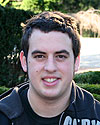
Visiting Europe has always been a dream for me and to visit the continent the way the Odyssey allows you to is amazing. You really get a feel for each metropolis, small town, and everything in between. Visiting the places that I have learned about in school and from books since I was a child and to actually see the Acropolis in Athens, the Pantheon in Rome, and the Louvre in Paris has been mind blowing. I will never forget this unique experience.
A New Style of Learning

It is only week three, and I have learned more about Europe and the European Union especially, than I have my whole college career. The experiential technique and personal interview-style of learning are such a great way to access knowledge about current issues from the people who are actually dealing with them. Sitting in a classroom reading out of a textbook is one way to learn about Europe, but it’s hard to actually appreciate the history until you actually see the sites and have dialogue with the citizens that are living here during this historic time.
Unbelievable View
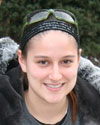
In Meteora, we visited the holy monastery of the great Meteoron, on the top of a huge rock formation. Some of us hiked all the way from town. That was by far the most unforgettable and rewarding experience I've had yet. It took three hours to get there. The view was unbelievable ... it made me feel so small. I would never have imagined that I'd be in such a beautiful and peaceful holy place.
Kali Spera

Kali Spera [Good Evening] from Meteora, Greece!
In this amazing place full of geological and historical uniqueness, I am reflecting on the process of community building as we wind up week three of the European Odyssey. I have spent much of my academic life focused on the meaning of community and the process of caring that is at its core, and I am continually impressed by the depth and quality of learning that this type of community on the road fosters. The inevitable conflicts and problems provide rich learning opportunities for growth and development. These are teachable moments in which we all can observe our strengths and weaknesses facilitating genuine personal transformation. Although this is my third Odyssey experience, I see things I've seen before in new ways and always delight in also seeing things through students' eyes.
An Experience
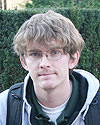
This trip has been an intense exercise in stress management. I have experienced and seen more than I have in any of my 21 other years. I realized today that since leaving New York, I have driven the length of France and Italy, and now I am sitting in a hotel in Greece. To this point alone, our journey is something that most people in the United States will never undertake. That is an astonishing fact considering the majority of our time traveling still lays ahead.
Having grown up in the isolated state of Utah, my idea of heavy travel was a six hour drive to Vegas. By the end of this trip, I will have been to 12 countries and eaten countless dinners picked simply by pointing at a menu. I owe a debt to our teachers for facilitating this beast of a program that will undoubtedly change my life forever.
Arriving in Greece
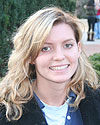
Yesterday we arrived in Greece. Docking the ferry at Igoumenitsa was so beautiful and the scenery was totally different from Italy. We drove up the mountains on twisty little roads, passing snow capped mountains and finally arriving at Kalembaki. From our hostel we are surrounded by huge rock formations. Today we hiked about three hours to Meteora. It was absolutely breathtaking. Tomorrow we head for Athens. Greece is wonderful!
Life-changing

This trip has already been life-changing, and it's only week two. I can't imagine the transformation that we will experience over the weeks to come. The group has come together and I feel like I have known everyone for years. I already consider some members family. We are soaking in so much beauty and history. At times it's overwhelming, but that's why we have one another - so we can go through this together.
I can't help but dwell on the fact that this trip will indeed be over at some point, and we will have to say goodbye to one another and to Europe. But for these next weeks I will try to make the most of every minute we have.
Florence is absolutely amazing. Walking the streets is like walking through an huge museum. Our hotel is amazing. It's comfortable but maintains the age, and integrity of the building, and all the furniture is antique. Dantés' wife was born on the first floor. It's about a two-minute walk from the Duomo (dome of the cathedral, Santa Maria del Fiore), so the location is ridiculous.
There are so many great restaurants and shops nearby. I love it here, but I can't wait for Rome!
Change is Inevitable
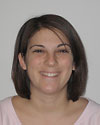
When you participate in the Odyssey program, change is inevitable. Whether you feel the changes as they are happening or become aware of trip’s impact years later, you experience a transformation and forever become a different person.
In 2003 I took my own leap of faith on the Odyssey and traveled with 14 strangers who became my “on the road family.” As I stepped out of my comfort zone, I learned about faith, patience, individuality, who I wanted to be and what I wanted to become.
I experienced moments when I shined and times when I was in a darker place. And at the end of that Odyssey I realized that although the trip was ending, the quest to find myself and experience life had just begun.
Since I returned from the European Odyssey in May 2003, there hasn’t been a day that I don’t reflect on that incredible experience and use the skills I learned from it.
Retracing my steps these past 10 days on this new Odyssey has been another life-changing experience. While I saw many of the same sites, I embraced the moments differently. I saw Europe, France and myself again in a new light.
I watched a new group of 14 college students begin their personal transformation.
My favorite way to live life is on the road, but for now my life is in New York. Although I am sad to be leaving France and my new “on the road family,” I leave with faith and hope that as they watch the sun rise and set, they too will be forever changed, always carrying the values and experiences they are learning close to their hearts.
A Nice Carnival

Last night the entire group went down into the main area of Nice for a Carnival. It was pretty amazing. We watched fireworks over the Mediterranean. Right before we watched the fireworks we came across a Calypso band playing; they were extremely talented and entertaining. Some of them were dressed up and dancing around; that was pretty neat to see. There was confetti everywhere you looked. There were also people going around spraying silly string on unsuspecting people; they caught a couple of people in our group. All in all Nice is a pretty amazing city but it kind of reminds me of Los Angeles with all the palms trees; so it's like Europe's LA.
We move on to Florence tomorrow; Italy here we come!
Looks like Italy
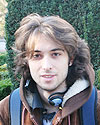
So we arrived in Nice, which is incredibly beautiful and looks like Italy. Technically it's in France, but it used to be in Italy before World War II. The whole city is built on and around a mountain range and the valley in the middle. All the houses are made of white stucco, and the roofs are brick colored slate. The weather is amazing; it hasn't rained once and the temperature hovers around 70°. There are even some palm trees, which I never expected to see in France of all places.
I'm actually writing from this great youth hostel; it used to be a rich family's villa and is built on the outskirts of town near the top of a mountain.
We also have free Internet and in-house meals (I'll be going for dessert as soon as this journal entry is done). Nice is also on the Mediteranean Sea, which is calm and exceptionally blue. The beaches are short and have no sand, but instead are covered with smooth rocks. Last night we went to the last day of Carnival, which is a big deal here. There were people spraying each other with silly string, a calypso band, and fireworks over the water. It was pretty incredible.
But enough about the awesome past - dessert pancakes await.
Warm, Sunny, Sultry Nice

We have just arrived in warm, sunny, sultry Nice and are enjoying the heat and light. Week One has been eventful but full of teachable, learnable moments!

The Bronze Ballerina
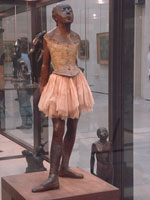

The Bronze Ballerina was made by Degas, and I have been wishing to see it for many years. Next to the Sistine Chaple, this is my other favorite work of art. The fact that I am seeing both up close and in person on this trip makes me extremely happy.

Going Wonderfully
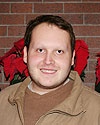
Things are going wonderfully; however, we may have hit a snag. We heard that one of the vans was towed this morning. So far that’s the biggest snag we’ve hit. As unfortunate as the van being towed is, it was fortunate that we don’t need it until 6 p.m. anyway, so we have plenty of time to try and work things out before we have to leave for Mont St. Michel.
Already we’ve done so much that this day of having no coordinated activities feels nice.
Bonjour from Paris!

After a smooth, easy flight, the European Odyssey 2007 arrived at Charles de Gaulle airport where we picked up our brand new silver Renault mini-vans and found our way to Hotel Voltaire near the Republique Square. After flying all night it took the beauty of Paris to override our fatigue. But we wanted to stay awake in order to get our biorhythms adjusted to the six hour time difference. So after settling into our cozy hotel we took an initial, rather dreamlike spin around Paris stopping at the Eiffel Tower, the Arc de Triomphe, the Champs-Elysees, the Place de Concord and other Parisian landmarks. It's always a thrill to share the first moments of witnessing these historic symbols that students have imagined for years.
After a deep sleep we are out exploring Paris on a drizzly Sunday. Because the rain made an excursion to the famous Pere Lachaise cemetery a damp and chilly choice, we decided to see the gargantuan D'Orsay Museum today and postpone the earlier plan for the day. Tomorrow we'll visit the great Louvre Museum, one of the sites of cultural pilgrimage on our long journey through western civilization. People are sometimes worried about the "attitude" that the French can have, particularly towards Americans. But after seeing Paris our hope is that students come to appreciate the amazing reality of French history and culture that lies behind this stereotype. After seeing Paris we can better understand the pride of this extraordinary society whose beauty we feel fortunate to share.
Back Home

I'm going to miss my family and friends the most. Things will go on as usual even though we won't be here.

Fear and Excitement

What I'm most nervous about is not knowing what to expect on the trip; but that's also what I'm most excited about.

Anticipation

I can't wait until the anticipation is all over and the group is standing at the base of the Eiffel Tower having our first picture taken in Europe!
Guest Speaker

Lori Jacobson
L.M.S.W., European Odyssey alumna
Lori is a social worker at New York Presbyterian Hospital-Weill Cornell Medical Center. She graduated from Hofstra University in 2004 with a bachelor of arts in family studies. Lori participated in the European Odyssey Program during the spring of 2003. During her time at Hofstra, she was actively involved with Hillel, serving as president during her senior year. Lori graduated from Columbia University in 2006 with a master’s of science in social work.
Lori assisted Professors Longmire and Smith with the orientation classes for the European Odyssey, and she is meeting the group in Paris to work on more team building exercises for the first 10 days of the trip. Lori says her European Odyssey experience, which was seven weeks long, taught her a lot “about Europe, community building and myself. I define it as my most important experience at Hofstra.”
Among the challenges she says this year’s Odyssey group will face is the lack of personal space. “It is difficult to travel in a group like this for four months. The honeymoon period will end pretty quickly and they will have to work hard to keep their group together.”

